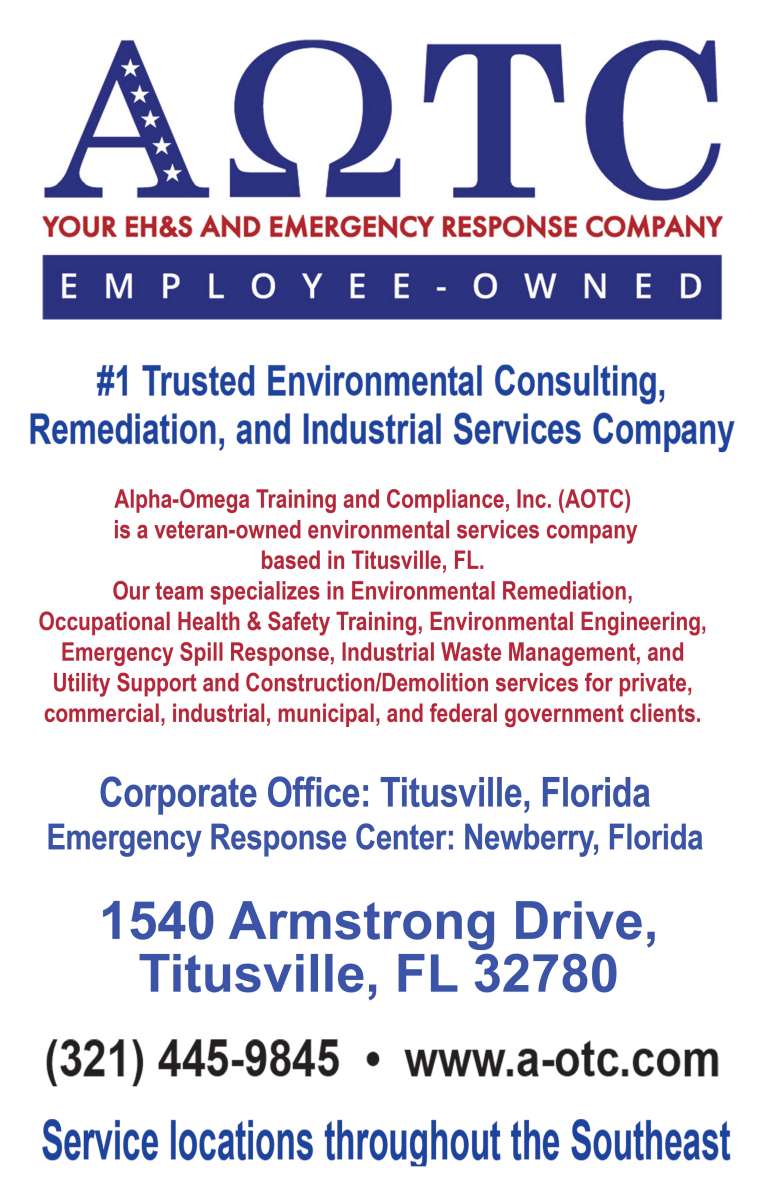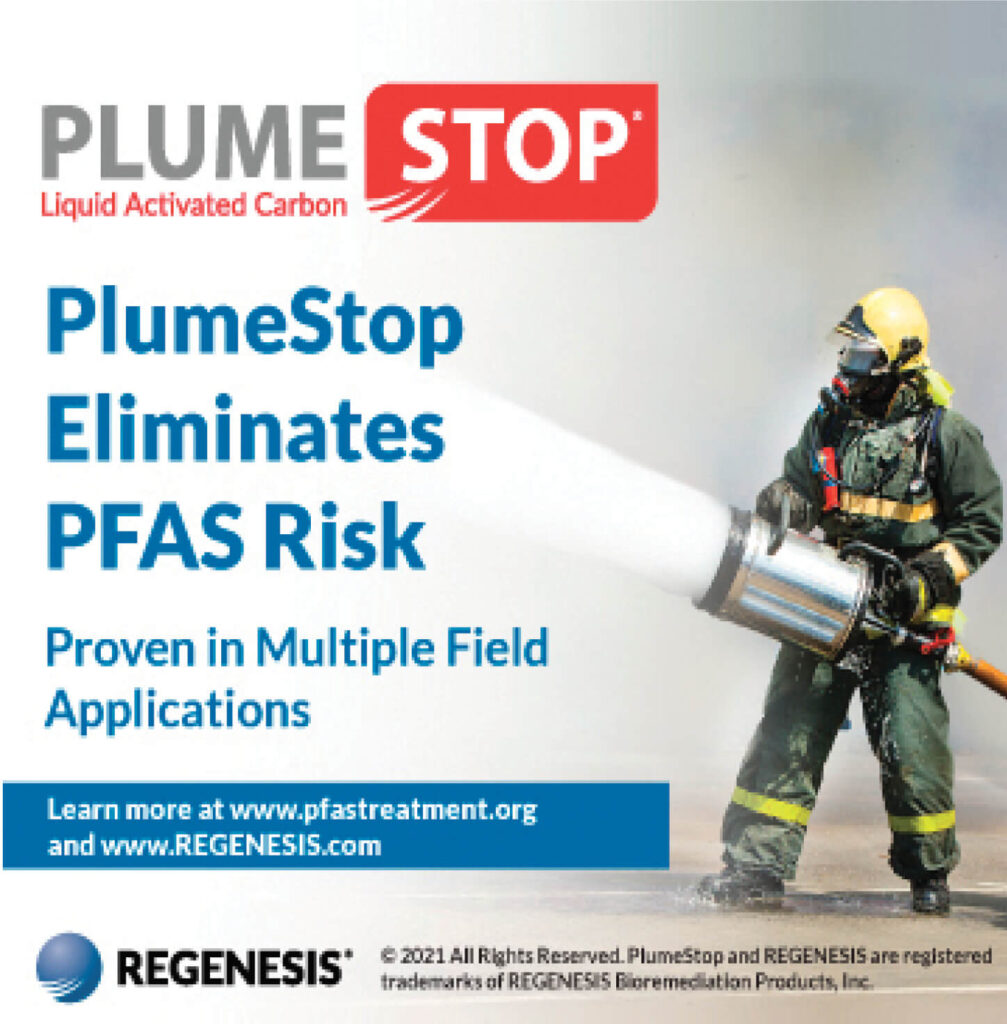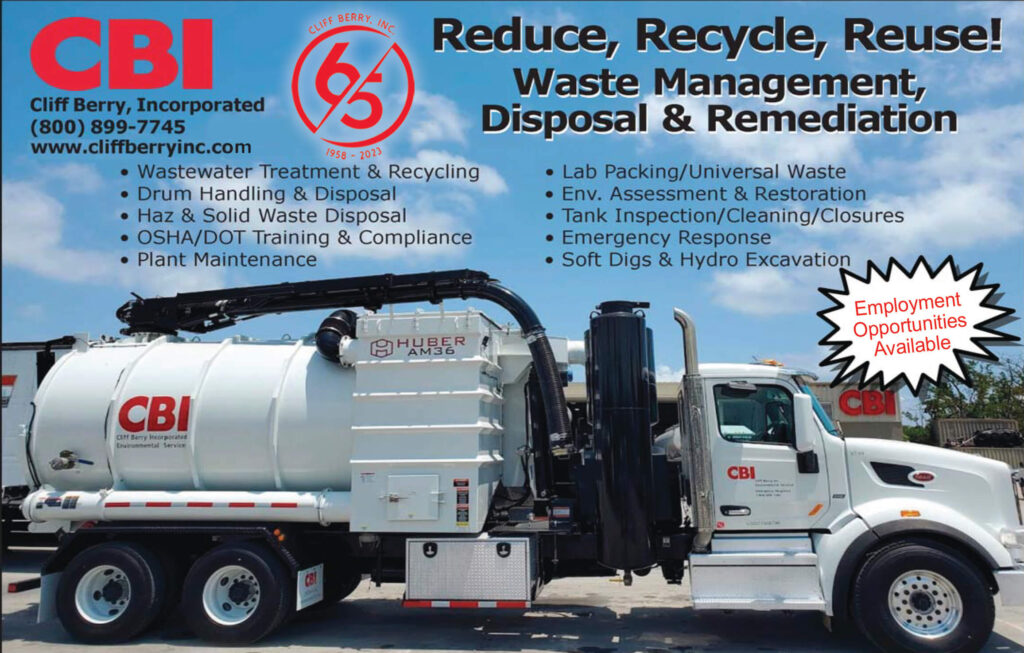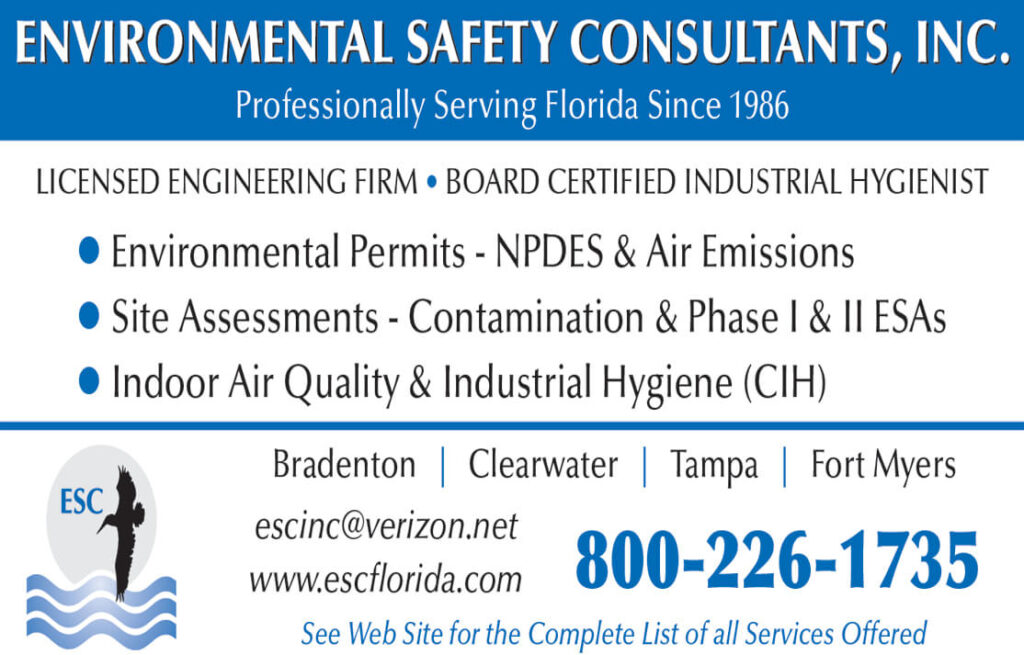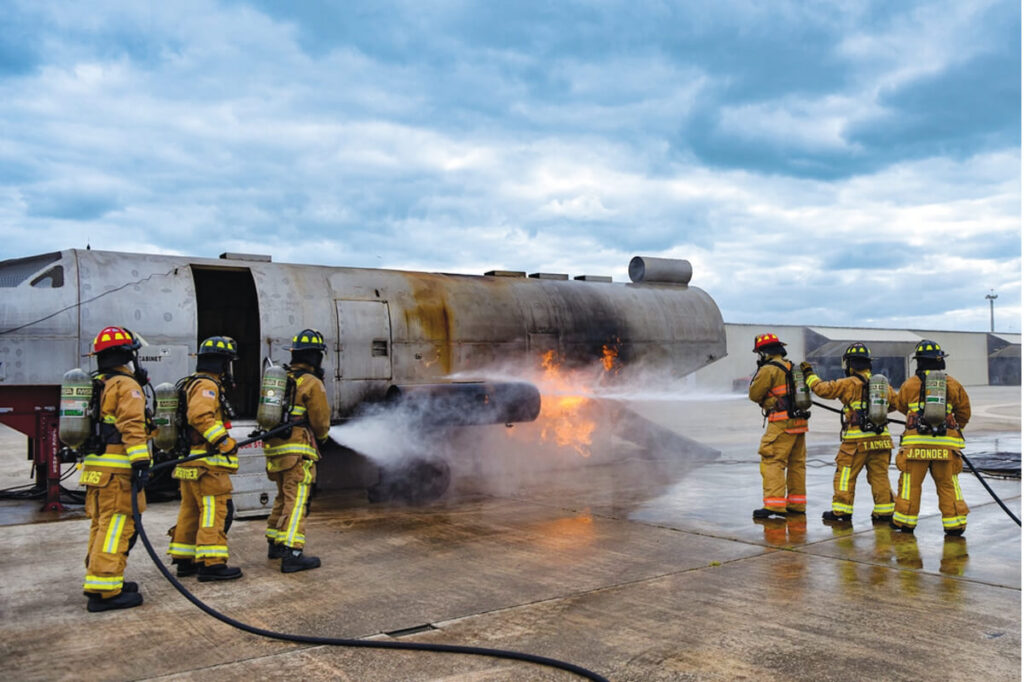
By MAUREEN DOOLEY,
Vice President, Industrial Sector at REGENESIS
Through combined sampling efforts by the U.S. Department of Defense (DoD) and the Florida Department of Environmental Protection (FDEP), PFAS impacts on groundwater have been consistently found at high concentrations at Federal aviation sites and fire training academies across the Sunshine State.
A new scientific study models the longevity of colloidal activated carbon remedies to treat these sources based on data obtained from 96 fire training sites and shows firefighting training areas at airports and fire training academies are the most significant sources of PFAS (per- and polyfluoroalkyl substances) contamination in Florida and present the highest exposure risk to Florida communities.
The study shows that applying these remedies directly to PFAS-impacted aquifers at former fire training areas can remove harmful contaminants from groundwater and eliminate downstream exposures to PFAS for decades. Backed by remedial performance data from 17 field sites, in situ colloidal activated carbon treatments offer a practical and cost-effective solution for Florida airport and fire training sites.
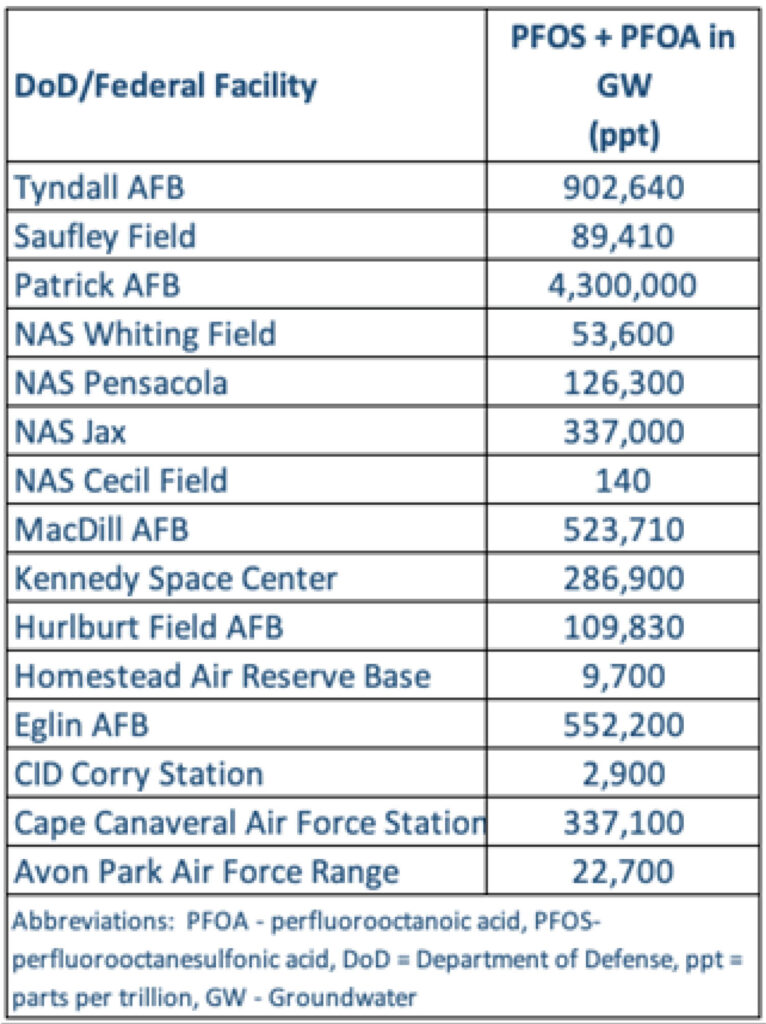
PFAS contamination at firefighting training areas presents a uniquely high-risk scenario for human exposure in Florida.
These PFAS source zones were created by spraying aqueous film-forming foams (AFFF) containing PFAS to extinguish fires during fire training exercises. The exercises usually were conducted in open, unlined pits or designated areas of airport tarmacs, often leaving the chemical remains from thousands of gallons of toxic foam directly exposed to rainwater.
As these exercises were repeated periodically over many years at most of these sites, they left behind heavy masses of PFAS leaching from shallow soils.
Rainwater drives the leaching of PFAS and other contaminants (e.g., petroleum hydrocarbons from jet fuel) through the soil until they reach groundwater. Once PFAS reach groundwater, they are readily transported by it. Since terminal PFAS compounds like perfluorooctanesulfonic acid (PFOS) and perfluorooctanoic acid (PFOA) do not appreciably degrade in the environment, they can travel for miles downgradient toward public water supply wells, domestic drinking water wells, or surface waters.
Florida is more vulnerable to these impacts because of the shallow groundwater table and permeable soils (i.e., sand-
dominant) encountered throughout the state, combined with the state’s large number of airports and fire training centers where AFFF releases happened.
At Florida’s 131 civilian airports, routine firefighting training using AFFF was mandated by the Federal Aviation Administration (FAA). Unlike the DoD sites, limited PFAS sampling data is publicly available for these facilities. However, similar impacts on the environment and surrounding communities can be expected.
Confirmed drinking water impacts from AFFF-PFAS releases
Based on the Navy’s nationwide base sampling effort, PFAS contamination was found above the U.S. EPA’s previous (2016) Health Advisory (HA) level of 70 parts per trillion in 12 drinking-water wells near Naval Air Station Whiting Field and 13 wells near Saufley Field.
Although alternative drinking-water supplies were made available to the residents upon discovery, exposures were likely to have occurred over many years.
New study shows decades or longer effective CAC treatment expected at airport and other fire training AFFF-release sites
Articles published in The Florida Specifier have described colloidal activated carbon (CAC, commercially available as PlumeStop) used in permeable barriers to remove PFAS from groundwater and eliminate downstream PFAS exposure risk.
Although CAC remedies have been widely successful, most have been implemented within the past few years. This has left questions regarding the longevity of these treatments needing to be answered.
The earliest deployed CAC treatment (2016) has eliminated PFAS to below detection limits for more than six years, thus far, following a single injection.
A recent study published in the REMEDIATION Journal, titled “Longevity of colloidal activated carbon for in situ PFAS remediation at AFFF-contaminated airport sites,” led by Dr. Grant Carey, a recognized expert in groundwater modeling and president of Porewater Solutions, sheds more light on the expected long-term performance of this patented technology to effectively treat PFAS in situ.
The study reviewed PFAS sampling data from 96 AFFF-contaminated airport sites, and performance data from 17 in situ CAC applications to model estimated treatment longevity for various site-specific scenarios. A few of the key findings from the study are summarized below.
1. CAC preferentially sorbs contaminants found at airports. The primary PFAS detected at airports were dominated by PFOS and PFHxS (perfluorohexane sulfonic acid), compounds preferentially sorbed to CAC relative to other PFAS.
2. Contaminant breakthrough times for in situ CAC treatments are much longer than ex-situ pump-and-treat carbon use. This is mainly due to the smaller particle size of CAC, resulting in higher mass transfer rates and below-ground application, resulting in much longer contaminant retention on the carbon particle surfaces.
3. Seventeen (17) field sites show successful results with co-contaminants present. Field sites where CAC was applied to treat PFAS were reviewed, showing successful results for treating both long and short-chain PFAS even in the presence of co-contaminants such as fuel hydrocarbons (used for creating flammable liquid fires). The project sites continue to perform.
4. Modeling indicates decades of treatment longevity. The authors developed isotherms for sorption to CAC using water collected from an actual AFFF-impacted airport site. Numerical modeling was conducted to evaluate the sensitivity of in situ CAC remediation of PFAS to site characteristics and design variables. The results further support earlier predictive modeling, conservatively suggesting decades of effective treatment at most AFFF releases, regardless of the cleanup criteria.
5. Longevity can be extended by reducing the incoming mass flux. Results indicate that in situ CAC treatment performance was most affected by incoming contaminant mass flux. These treatments can be extended when combined with an up-gradient source zone treatment (i.e., applying SourceStop(R) concentrated CAC formula, paving/capping a source zone to reduce infiltration, etc.) to reduce the down-gradient contaminant flux over time.
Based on these findings, CAC remedies, applied in situ, offer a practical and effective solution for treating PFAS to reduce exposure risk from AFFF releases at airport and fire academy sites in Florida and beyond.●
SIDEBAR
Drinking-water maximum contaminant levels for PFOA and PFOS due in 2023
In June 2022, the U.S. EPA revised the HAs for PFOA and PFOS to 0.004 and 0.02 ppt, respectively, down from their previous HAs of 70 ppt. These concentrations are well below laboratory detection limits, meaning that any detection of the chemicals in drinking water may be a health risk. The agency has proposed designating the two chemicals as hazardous substances under the Superfund program. It is developing a proposed National Primary Drinking Water Regulation (NPDWR) for the compounds, due for release later in 2023. Industry observers expect that PFOA and PFOS action levels may be set equal to their laboratory detection limits, typically less than four ppt. If valid, many sites now considered “clean” (less than 70 ppt for PFOA and PFOS) may be required to implement remedies for PFAS cleanup.





